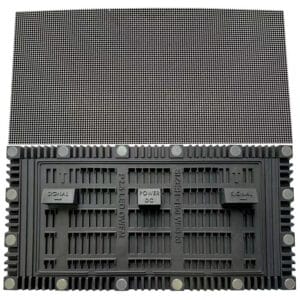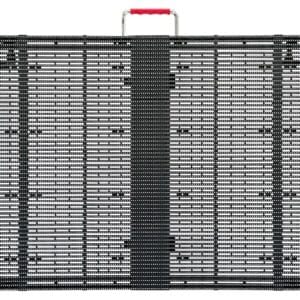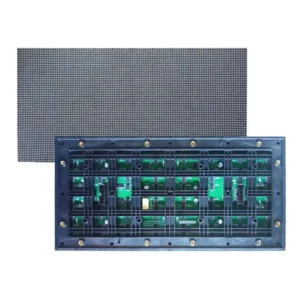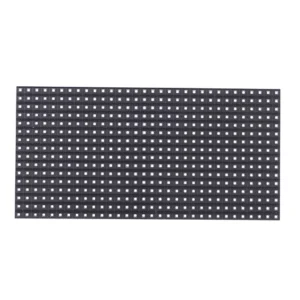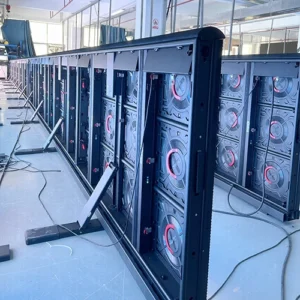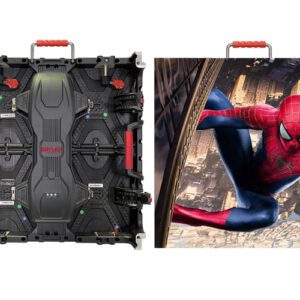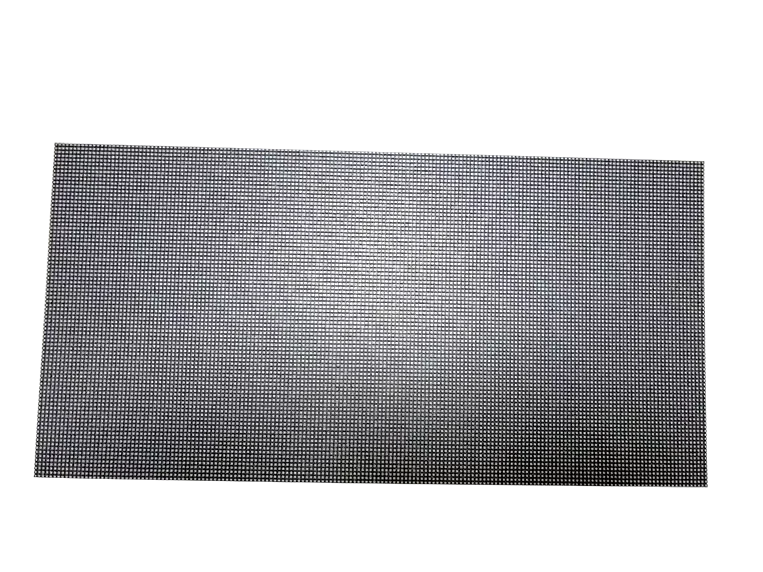
Outdoor LED Display Module
As someone who has delved into the world of outdoor LED display modules, I understand the significance of selecting the right technology for various applications. Whether it’s for advertising, informational displays, or entertainment, the choice of an outdoor LED display module can make or break the effectiveness of the project. The outdoor environment poses unique challenges such as varying light conditions, weather changes, and the need for durability.
Outdoor LED display modules are designed to withstand these challenges while delivering high-quality visuals. They leverage light-emitting diodes (LEDs) to create vibrant images and videos that capture attention. In this article, I will guide you through the essential considerations to ensure that you make an informed decision when selecting an outdoor display module.
3840Hz Refresh Rate
SMD LED
2 Years Warranty







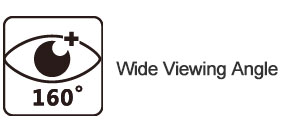
LED Display Module Technology
Pixel Pitch
This refers to the distance between the centers of two adjacent pixels. A smaller pixel pitch means higher resolution, which is essential for detailed displays.
Brightness: Measured in nits, brightness levels determine how well the display performs in bright sunlight. Higher brightness ensures visibility, even in direct sunlight.
Brightness
Measured in nits, brightness levels determine how well the display performs in bright sunlight. Higher brightness ensures visibility, even in direct sunlight.
72 Hours Aging Test
72 hours aging test (white balance aging (2×24 hours) and video aging (24 hours)) to improve the reliability of the indoor LED display modules and ensure the LED modules are without broken LEDs.
Color Depth
This indicates the number of colors a display can reproduce. A higher color depth allows for more vivid and realistic images.
Contact Us
320*160mm
High Refresh Rate
SMD 3 in 1
2 Years Warranty
CE,RoHS,FCC Approved
320x160mm Series Outdoor LED Module
| Pixel Pitch | LED | Module Resolution | LED Type | Brightness(Nits) | Module Size(MM) | Driving Mode |
| P2.5mm | SMD1415 | 128*64 | SMD 3in1 | >5500 | 320*160 | 1/16Scan |
| P3.076mm | SMD1415 | 104*52 | SMD 3in1 | >5000 | 320*160 | 1/13Scan |
| P3.33mm | SMD1921 | 96*48 | SMD 3in1 | >5500 | 320*160 | 1/12Scan |
| P4mm | SMD1921 | 80*40 | SMD 3in1 | >5500 | 320*160 | 1/10Scan |
| P5mm | SMD2525 | 64*32 | SMD 3in1 | >5200 | 320*160 | 1/8Scan |
| P6.67mm | SMD3535 | 48*24 | SMD 3in1 | >5500 | 320*160 | 1/6Scan |
| P8mm | SMD3535 | 40*20 | SMD 3in1 | >5800 | 320*160 | 1/5Scan |
| P10mm | SMD3535 | 32*16 | SMD 3in1 | >6000 | 320*160 | 1/2Scan |
| P10mm | SMD3535 | 32*16 | SMD 3in1 | >4500 | 320*160 | 1/4Scan |
250x250mm Series Outdoor LED Module
| Pixel Pitch | LED | Module Resolution | LED Type | Brightness(Nits) | Module Size(MM) | Driving Mode |
| P2.976mm | SMD1415 | 84*84 | SMD 3in1 | >4500 | 250*250 | 1/21Scan |
| P3.91mm | SMD1921 | 64*64 | SMD 3in1 | >4500 | 250*250 | 1/16Scan |
| P4.81mm | SMD1921 | 52*52 | SMD 3in1 | >4500 | 250*250 | 1/13Scan |
192*192mm Series Outdoor LED Display Panel
| Pixel Pitch | LED | Module Resolution | LED Type | Brightness(Nits) | Module Size(MM) | Driving Mode |
| P3mm | 1415 | 64*64 | SMD 3in1 | >5500 | 192*192 | 1/16Scan |
| P6mm | 3535 | 32*32 | SMD 3in1 | >5500 | 192*192 | 1/8Scan |
| P6mm | 3535 | 32*32 | SMD 3in1 | >6800 | 192*192 | 1/4Scan |
160*160mm Series LED Outdoor SMD Module
| Pixel Pitch | LED | Module Resolution | LED Type | Brightness(Nits) | Module Size(MM) | Driving Mode |
| P2.5mm | SMD1415 | 64*64 | SMD 3in1 | >5500 | 160*160 | 1/16Scan |
| P3.33mm | SMD1921 | 48*48 | SMD 3in1 | >5500 | 160*160 | 1/12Scan |
| P5mm | SMD2525 | 32*32 | SMD 3in1 | >5200 | 160*160 | 1/8Scan |
| P10mm | SMD3535 | 16*16 | SMD 3in1 | >6000 | 160*160 | 1/2Scan |
DIP Series Outdoor LED Module
| Pixel Pitch | LED | Module Resolution | LED Type | Brightness(Nits) | Module Size(MM) | Driving Mode |
| P10mm | DIP346 | 16*16 | 1R1G1B | >7000 | 160*160 | 1/4Scan |
| P10mm | DIP346 | 32*16 | 1R1G1B | >7000 | 320*160 | 1/4Scan |
| P16mm | DIP346 | 16*16 | 1R1G1B | >7000 | 256*256 | 1/1Scan |
| P20mm | DIP346 | 16*8 | 1R1G1B | >7000 | 320*160 | 1/1Scan |
Dual Service (Frontal & Rear) Outdoor LED Module
| Pixel Pitch | LED | Module Resolution | LED Type | Brightness(Nits) | Module Size(MM) | Driving Mode |
| P3.91mm | SMD1921 | 64*64 | SMD 3in1 | >6000 | 250*250 | 1/8Scan |
| P4.8mm | SMD1921 | 52*52 | SMD 3in1 | >6000 | 250*250 | 1/7Scan |
| P4mm | SMD1921 | 80*80 | SMD 3in1 | >5500 | 320*320 | 1/10Scan |
| P5.3mm | SMD1921 | 60*60 | SMD 3in1 | >5500 | 320*320 | 1/8Scan |
| P6.67mm | SMD2727 | 48*48 | SMD 3in1 | >5500 | 320*320 | 1/6Scan |
| P8mm | SMD3535 | 40*40 | SMD 3in1 | >5500 | 320*320 | 1/5Scan |
| P10mm | SMD3535 | 32*32 | SMD 3in1 | >5500 | 320*320 | 1/2Scan |
| P5.3mm | SMD1921 | 60*60 | SMD 3in1 | 5500-6000 | 320*320 | 1/6Scan |
| P6.67mm | SMD2727 | 48*48 | SMD 3in1 | 5000-5500 | 320*320 | 1/6Scan |
| P8mm | SMD3535 | 40*40 | SMD 3in1 | 5000-5500 | 320*320 | 1/5Scan |
| P10mm | SMD3535 | 32*32 | SMD 3in1 | 6000-6500 | 320*320 | 1/2Scan |
| P10mm | DIP346 | 32*32 | 1R1G1B | >7500 | 320*320 | 1/4Scan |
| P16mm | DIP346 | 20*20 | 1R1G1B | >7000 | 320*320 | 1/1Scan |
Choosing the Right Outdoor LED Display Module
Click Here to Jump!
- Key Factors to Consider When Choosing an Outdoor LED Display Module
- Exploring Different Types of Outdoor LED Display Modules
- The Impact of Resolution and Pixel Pitch on Display Quality
- Brightness and Contrast: Essential for Outdoor Visibility
- Durability and Weather Resistance in Outdoor LED Modules
- Energy Efficiency and Power Consumption Considerations
- Analyzing LED Display Module Prices: Cost vs. Quality
- Installation and Maintenance Requirements for Outdoor LED Displays
- Future Trends in Outdoor LED Display Technology
- Case Studies: Successful Outdoor LED Display Implementations
- Conclusion: Making the Right Choice for Your Outdoor LED Display Module
1. Key Factors to Consider When Choosing an Outdoor LED Display Module
Choosing the perfect outdoor LED display module involves assessing several critical factors. First and foremost, I recommend considering the purpose of the display. Are you using it for advertising, public announcements, or entertainment? The intended use will significantly influence the specifications needed.
Next, location plays a crucial role. Is the display going to be installed in a busy urban area, or will it be in a more secluded venue? The visibility from various angles and distances will guide your decision on pixel pitch and brightness. Lastly, budget is always a consideration. While it’s tempting to go for the cheapest option, investing in quality often pays off in terms of durability and performance.
In summary, I believe it’s vital to:
- Define the purpose of the display.
- Assess the location and environmental conditions.
- Set a realistic budget without compromising on quality.
2.Exploring Different Types of Outdoor LED Display Modules
Outdoor LED display modules come in various types, each suited for specific applications. My experience has led me to categorize them broadly into three types: fixed displays, rental displays, and mobile displays.
Fixed Displays: These are permanently installed and are ideal for advertising billboards or informational signage. They typically have a robust design and high durability, making them suitable for long-term use.
Rental Displays: If your needs are temporary, such as for events or exhibitions, rental displays are the way to go. They are lightweight and designed for easy assembly and disassembly, allowing for quick setup and transport.
Mobile Displays: These are mounted on trailers or vehicles and can be moved to various locations. They are excellent for promotional events, parades, or sporting events where you need flexibility.
By understanding the different types, you can better align your choice with your specific needs and goals.
3.The Impact of Resolution and Pixel Pitch on Display Quality
When it comes to outdoor LED displays, resolution and pixel pitch are two of the most critical factors influencing display quality. In my experience, the pixel pitch directly affects how sharp and clear the displayed content will be. A lower pixel pitch means that the pixels are closer together, resulting in higher resolution and more detailed images. This is particularly important for close viewing distances, such as in retail environments.
For example, displays with a pixel pitch of 10mm might be suitable for viewing from a distance of 10-15 meters, while those with a pixel pitch of 5mm can be viewed effectively from a distance of 5-10 meters. Understanding these distances helps in selecting the right module based on the expected audience proximity.
Moreover, resolution affects not just clarity but also the overall viewing experience. High-resolution displays are essential for vibrant graphics and videos, especially in advertising. They can convey a message effectively, grabbing attention and increasing engagement among viewers.
Ultimately, I recommend evaluating the intended viewing distance and the types of content that will be displayed to make an informed choice regarding resolution and pixel pitch.
4.Brightness and Contrast: Essential for Outdoor Visibility
One of the most significant challenges outdoor displays face is visibility in bright sunlight. Therefore, brightness and contrast are fundamental factors to consider when selecting an outdoor LED display module. Brightness is measured in nits, and for outdoor applications, a minimum of 5,000 nits is recommended, with many high-end displays reaching up to 10,000 nits or more.
Contrast ratio, on the other hand, measures the difference between the darkest and lightest parts of an image. A higher contrast ratio enhances the visibility of the content, making it easier to read even in challenging lighting conditions. I’ve found that displays with a high brightness level combined with an excellent contrast ratio provide the best visual experience outdoors.
When evaluating options, look for manufacturers that specify both brightness levels and contrast ratios in their product specifications. This will give you a clearer picture of how well the display will function in real-world conditions.
5.Durability and Weather Resistance in Outdoor LED Modules
Outdoor environments can be harsh, which is why durability and weather resistance are paramount when selecting an LED display module. I have encountered numerous instances where displays were compromised due to poor construction, leading to costly repairs or replacements.
When reviewing options, I recommend checking the IP rating of the display. The IP rating indicates how well the module can resist dust and water ingress. For outdoor applications, I suggest looking for an IP65 rating or higher, which ensures that the display is dust-tight and can withstand water jets.
Additionally, consider materials used in the construction of the display. Modules made of high-quality aluminum or steel are often more durable than those made of plastic. Furthermore, a robust design can help the display withstand high winds and other environmental factors.
In summary, prioritize durability and weather resistance to ensure a long-lasting investment in your outdoor LED display module.
6.Energy Efficiency and Power Consumption Considerations
In today’s environmentally-conscious world, energy efficiency is a critical consideration when selecting an outdoor LED display module. Not only does it contribute to lower operating costs, but it also aligns with sustainability goals. I have found that energy-efficient displays can significantly reduce electricity costs, especially for installations that run continuously.
When evaluating energy efficiency, look for energy consumption ratings provided by manufacturers. These ratings often reflect how much power the display uses per square meter. Additionally, consider features such as automatic brightness adjustment, which can optimize energy usage based on ambient light conditions.
Incorporating energy-efficient technology can lead to substantial savings over time. Therefore, it is beneficial to choose displays that utilize advanced LED technology designed for lower power consumption.
7. Analyzing LED Display Module Prices: Cost vs. Quality
Price is often a significant factor in the decision-making process when selecting an outdoor LED display module. However, I urge you to evaluate the cost in relation to quality. While it may be tempting to choose the cheapest option available, this could lead to higher long-term costs due to maintenance and replacement needs.
It’s essential to consider what is included in the price. Some manufacturers may offer lower initial prices but charge extra for essential features like mounting hardware, controllers, or warranties. On the other hand, investing in a higher-quality display upfront may save you money in the long run through lower maintenance and energy costs.
I recommend conducting a thorough cost-benefit analysis, weighing the features and quality against the price to ensure you choose the best value for your investment.
8.Installation and Maintenance Requirements for Outdoor LED Displays
Once you have selected an outdoor LED display module, understanding the installation and maintenance requirements is crucial. Proper installation is vital for optimal performance and longevity, so I recommend hiring professionals with experience in LED installations. They can ensure that the display is mounted correctly and that all wiring and electrical connections comply with local regulations.
Maintenance is another critical aspect to consider. Although outdoor LED displays are designed for durability, routine maintenance can prolong their lifespan and maintain display quality. I suggest developing a maintenance schedule that includes:
- Regular cleaning of the display surface.
- Checking connections and power supply.
- Inspecting for any signs of wear or damage.
By committing to regular maintenance, you can prevent small issues from escalating into significant problems, ultimately protecting your investment.
9.Future Trends in Outdoor LED Display Technology
As technology continues to evolve, outdoor LED displays are becoming more advanced. In my observations, several trends are shaping the future of outdoor LED display technology.
Smart Displays: Integration with IoT technology is on the rise, allowing for real-time data display and remote monitoring. This advancement enables operators to manage content and troubleshoot issues from anywhere.
Higher Resolutions: As consumer expectations for quality increase, manufacturers are developing displays with smaller pixel pitches, enabling even sharper images and videos.
Sustainable Solutions: With a growing focus on sustainability, the industry is moving towards more energy-efficient designs and recyclable materials.
Being aware of these trends can help you stay ahead in your decision-making process and choose a display that remains relevant and effective for years.
10.Case Studies: Successful Outdoor LED Display Implementations
To illustrate the impact of outdoor LED display modules, I’d like to share a few successful case studies that highlight their effectiveness.
Times Square, New York: This iconic location features some of the largest and brightest LED displays in the world. The displays not only attract tourists but also serve as a platform for advertisers, showcasing stunning visuals that captivate millions of visitors daily.
Sports Stadiums: Many professional sports teams have incorporated large outdoor LED displays in their stadiums. These displays enhance the fan experience by providing instant replays, statistics, and advertisements, significantly boosting engagement.
Retail Signage: Numerous retail establishments have seen increased foot traffic by installing outdoor LED displays. These displays showcase promotions and events, drawing customers in with eye-catching content and vibrant colors.
These examples demonstrate the versatility and effectiveness of outdoor LED displays across various applications, reinforcing the importance of making the right choice.
11.Conclusion: Making the Right Choice for Your Outdoor LED Display Module
In conclusion, selecting the right outdoor LED display module is a multifaceted process that requires careful consideration of various factors. From understanding the basics of LED technology to evaluating durability, brightness, and manufacturer quality, each aspect plays a crucial role in ensuring the success of your project.
I encourage you to take your time in researching and comparing different options. Remember to assess your specific needs, stay informed about industry trends, and consider future maintenance to make an informed decision.
Ultimately, investing in the right outdoor LED display module can significantly enhance visibility, engagement, and overall effectiveness for your intended purpose. If you’re ready to explore your options further, feel free to reach out for personalized advice tailored to your needs.
Ready to elevate your outdoor advertising or informational displays? Contact us today to discuss your specific needs, and let’s find the perfect outdoor LED display module for your project! Our team is here to assist you in making the best choice for your unique requirements.

